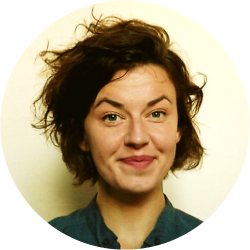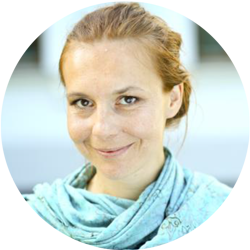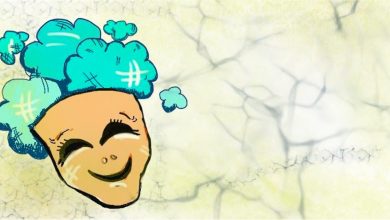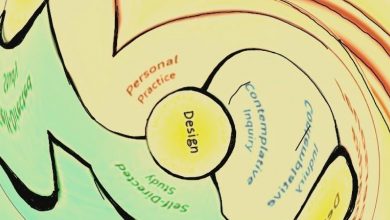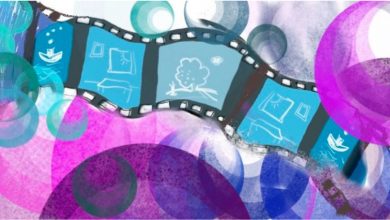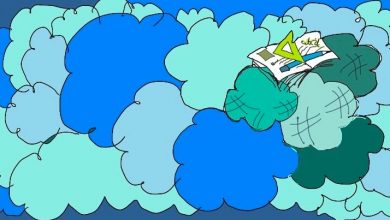Identity and Learning. Storytelling
In today’s fast-paced world of learning in which we constantly need to reinvent ourselves to adapt to the trends in the job market as well as to the turbulent postmodern life’s requirements, when there is always something more we need to become, it is important to take a step back, remember who we were and who we want to become. Such a holistic view of ourselves is more important than ever. This article recommends the use of storytelling as a tool to integrate those fragmented sides of ourselves

Why did I choose this tool?
As someone who has experienced defragmentation myself, I have found that writing our story helps us make peace with ourselves and who we have become. Moreover, storytelling is a widely acknowledged tool in psychotherapy, used for similar purposes.
Writing our personal narrative helps us rethink what we have previously learned and which new goals we want to set for ourselves for the future and thereby helps us develop the competence to identify learning objectives and pursue them proactively.
How does this apply to being a trainer?
Trainers have an opportunity to reflect upon the story of their lives and their identity, reconciling any problematic, painful or defragmented parts of their life story.
Content
“When one of society’s most central and direct requirements of its members is that we must always be flexible and ready for change, a fixed, stable identity becomes problematic.” (Illeris, 2017 p.139)
Traditionally, the concept of identity was first addressed by the German-American psychoanalyst Erik H. Erikson. The word identity, comes from the Latin idem, which means ‘the same’ and refers to the experience of being the same or being recognizable both to oneself and others in different situations.
However, traditional definitions of identity are not valid nor applicable to the modern concept of identity as they “presuppose a society with a degree of stability, common norms and forms of consciousness that no longer exist” (Illeris, 2017, p.140). Postmodern times have brought new, unprecedented conditions for identity development, such as “the break-up of the nuclear family, the intensification of work, and the explosion of compensatory consumption and compensatory satisfactions” (ibid.).
A type of identity search and identity process still exists, as the youth is still trying to discover who they are and what they want to be. We have been liberated from all the old norms and traditions that previously controlled our lives, for good or bad. Now we have far greater freedom to choose and form our own lives. However, it should be noted that these processes are not necessarily pleasant ones; such development often involves resistance, defensiveness, and blocks which can be rigid and restrictive for the individual.
The starting point of the new view of identity started when new types of psychological problems started to be dominant in psychoanalytical practices. These were mostly related to a lack of self-esteem, feelings of emptiness, a feeling of not really existing, a lack of pleasure in work and of initiative, and an increased tendency towards routine behaviors (Illeris, 2017, p.141).
However, the most consistent and extreme challenge to the traditional perception of identity emerged in the 1990s within social constructionism, which is based on the idea that mental processes are developed in social interactions. It is therefore dubious to talk about an existence of an authentic self because, when social situations and contexts change, identity and the self must do so as well. The late modern person has to take on a number of different social roles, which are mostly not even coherent or connected. “The late-modern person is just as split as the world in which he or she lives.” (Illeris, 2017, p.141)
What does it mean that personality is socially constructed?
“One way of looking at this is to think of personality as existing not within people but between them. Take some of the personality-type words we use to describe people: for example, friendly, caring, shy, self-conscious, charming, bad-tempered, thoughtless … Words which would completely lose their meaning if the person described were living alone on a desert island. The point is that we use these words as if they referred to entities existing within the person they describe, but once the person is removed from their relations with others, the words become meaningless.” (Burr 2006, pp. 25, 26 and 27)
Gergen uses the term ‘the saturated self’ to explain this phenomenon of a self or an identity that is constantly inundated with so many diverse influences that it simply cannot contain them all, at least not in a coherent or holistic manner (Gergen, 1991).
Counterviews however claim that while dissolution trends do exist, there must be a type of inner mental coherence and continuity in the individual. Deep inside of us there must be a core identity or self which predetermines further personality development.
As Illeris suggests, there should be a duality of both a core identity and extreme flexibility. This flexibility should not have the nature of identity confusion but, rather, of constant reconstruction. Such a solution allows for both stable personality structures as well as continuing changes through influences and learning (Illeris, 2017, p.142).
One solution for identity fragmentation comes through writing a personal life story or individual biography as something that holds the individual together mentally and helps them form a type of identity. “The narration is neither a precise nor a truthful account of the actual life course but precisely the history of the life course that the person in question has developed, the constant interpretation and attribution of significance one assigns to events and contexts which one subjectively finds important for the life course and the current situation – in the same way as the identity is a more or less coherent entity which, however, constantly develops and is reinterpreted.” (Illeris, 2017, p.141-142)
Individual exercise:
a) Sit comfortably and close your eyes. Start focusing on your breath. Follow your breath with every inhalation and exhalation. Do this for a few minutes.
b) Next, imagine that right now in your life, you are everything you were supposed to be. For a few moments, just imagine that everything is fine and there is no reason to judge or regret anything in your life. Everything is exactly how it should be. You are a winner. Feel like a winner. Focus on feeling as a winner for the next few moments. Breathe into the feeling and smile. If you want, you can visualize yourself here too—as a winner.
c) Next, look back onto your life and imagine that every single moment brought about this moment right now. Every single thing was meant to happen for you to be here now.
d) Now, think about the story of your life, from the time you were a little kid, until today. Remember, everything was supposed to happen exactly how it did. You are a winner, and you have nothing to regret. From the perspective of a winner, and with a smile on your face, take a few minutes to internally retell to yourself your life story, keeping it light and judgment free.
e) When you are done, gently open your eyes.
f) Write the story of your life maintaining the same light and judgment free style of narration.
Reflection questions:
What title would you give to your story?
Which parts of your story would you like to describe better?
How would you describe yourself?
Which metaphor would describe you? Choose one symbol from nature.
Try to remember yourself from 10 years ago. In what ways did you change? In what ways do you think you have stayed the same?
Name 3 life experiences that have had the strongest impact on you and explain why?
How does the theory presented in this article refer to you and your experience of an individual living in a postmodern society?
What else would you like to add?
